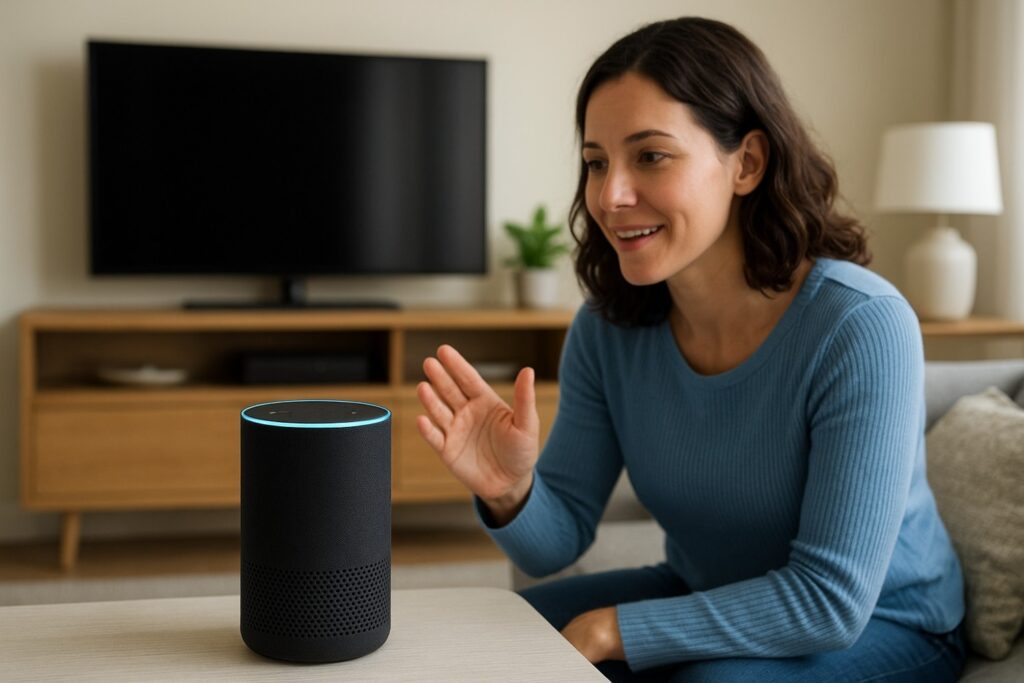How AI Assistants Are Transforming Everyday Life in American Homes
Artificial Intelligence (AI) has quickly moved from science fiction to a staple of everyday American life. Over the last decade, smart home technology has evolved from simple voice commands to complex systems that learn, predict, and adapt to our habits. Whether it’s Alexa dimming the lights, Google Assistant setting reminders, or ChatGPT-powered devices answering questions, AI assistants are quietly reshaping how Americans live, work, and connect at home.

A New Standard for Convenience
Gone are the days when home automation felt futuristic. Today, AI assistants handle everyday tasks that used to require manual effort — managing calendars, adjusting thermostats, ordering groceries, and even reminding you to take your medication. The average U.S. household now owns multiple smart devices connected through platforms like Amazon Alexa, Google Home, or Apple HomeKit.
Voice-activated systems allow people to multitask seamlessly. Imagine starting your coffee maker, checking traffic updates, and turning off the bedroom lights — all without lifting a finger. This hands-free convenience is one of the biggest reasons AI assistants have become household essentials, especially for busy families juggling work, school, and personal time.
Personalized Living Experiences
Modern AI assistants do more than respond to commands — they learn from behavior. Over time, they understand patterns such as when you wake up, which music you prefer in the morning, or what temperature you like at night. This personalization makes daily routines smoother and more efficient.
For example, if you usually leave for work at 8 a.m., your assistant can automatically start your favorite playlist, give you a weather update, and adjust your home’s energy settings to save power while you’re away. The result is a personalized home environment that feels intuitive and responsive — almost like a digital butler who knows your preferences.
Supporting Families and Accessibility
AI technology has also made a significant impact on accessibility and caregiving in American households. For seniors or people with disabilities, voice assistants offer independence and safety. Simple voice commands can control lighting, call family members, or send alerts during emergencies.
Parents use AI tools to monitor home security cameras, check homework help, or even read bedtime stories. These applications show that AI isn’t just about luxury — it’s also improving quality of life and safety for millions of families.
Managing Energy and Sustainability
With growing awareness about energy efficiency, many Americans are turning to AI-enabled smart home systems to reduce waste and utility costs. Smart thermostats like Google Nest or Ecobee analyze household usage patterns and automatically optimize heating and cooling schedules.
Lighting systems powered by AI detect occupancy and daylight levels to adjust brightness and reduce consumption. Over time, these small optimizations add up to lower bills and a smaller carbon footprint — making AI a key player in the sustainability movement.
Privacy and Data Concerns
Of course, the growing presence of AI in homes also raises questions about privacy. Devices are always “listening” for wake words, and companies often collect user data to improve algorithms. Many Americans remain cautious, demanding stronger privacy controls and transparent data policies. The good news: manufacturers are responding with features like local processing, voice deletion options, and stricter encryption standards.
The Future of AI-Driven Homes
As AI continues to evolve, its role in American households will only deepen. Future assistants will likely integrate emotional intelligence — recognizing tone and mood — and collaborate with other home systems to anticipate needs even before we voice them. From predictive grocery ordering to personalized health monitoring, the next generation of AI assistants will make homes smarter, safer, and more connected than ever.
Final Thoughts
AI assistants are no longer just convenient gadgets; they’ve become integral companions shaping the rhythm of daily American life. From energy management to accessibility, their influence is expanding across every corner of the home. As technology advances, one thing is certain — AI is redefining what it means to live comfortably, efficiently, and intelligently in the modern American household.







